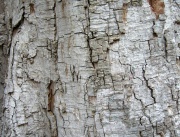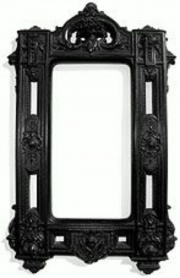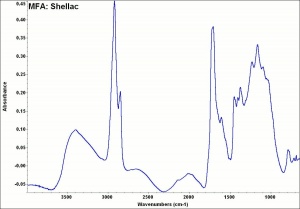Difference between revisions of "Shellac"
(username removed) |
(username removed) |
||
| Line 4: | Line 4: | ||
== Description == | == Description == | ||
| − | A resinous substance excreted by the female of the lac insect, Laccifer lacca, native to India. The insects primarily deposit lac on the twigs and soft new branches of several varieties of soapberry and acacia trees, such as the sacred fig, ''Ficus religiosa'', found in India, Thailand, Myanmar (Burma), and elsewhere in southeast Asia. Lac was used as early as about 1200 BCE in India. Shellac and [http://cameo.mfa.org/materials/fullrecord.asp?name=lac | + | A resinous substance excreted by the female of the lac insect, Laccifer lacca, native to India. The insects primarily deposit lac on the twigs and soft new branches of several varieties of soapberry and acacia trees, such as the sacred fig, ''Ficus religiosa'', found in India, Thailand, Myanmar (Burma), and elsewhere in southeast Asia. Lac was used as early as about 1200 BCE in India. Shellac and [http://cameo.mfa.org/materials/fullrecord.asp?name=lac%20dye lac dye] were imported to Europe in the 17th century. The resin coated twigs, also called sticklac, undergoes several processing steps to extract useful components. The raw lac is washed, heated and drawn out into thin sheets. Once cooled, the shellac is broken into small flakes for sale as flake shellac. The color of shellac ranges from a pale yellow to a deep red. Shellac is soluble in alcohol and is used to obtain the high gloss on French polished furniture. It is also used as a protective coating for plaster molds and casts. In the 19th century, shellac was filled with wood flour and used for molded composition products such as buttons, picture frames, [http://cameo.mfa.org/materials/fullrecord.asp?name=daguerreotype daguerreotype] and [http://cameo.mfa.org/materials/fullrecord.asp?name=ambrotype ambrotype] cases, and gramophone records. Black pigmented, mineral-filled shellac was used for 78 rpm phonograph records, mirror frames, brooches, and dressing table sets. Shellac was often adulterated with [http://cameo.mfa.org/materials/fullrecord.asp?name=rosin rosin] (Doerner 1934). |
[[File:shellacframevt.jpg|thumb|Shellace based picture frame]] | [[File:shellacframevt.jpg|thumb|Shellace based picture frame]] | ||
| Line 41: | Line 41: | ||
== Additional Information == | == Additional Information == | ||
| − | K.Wehlte, ''The Materials and Techniques of Painting'', Van Nostrand Reinhold Co., New York, 1975. | + | ° K.Wehlte, ''The Materials and Techniques of Painting'', Van Nostrand Reinhold Co., New York, 1975. ° M.Doerner, ''The Materials of the Artist'', Harcourt, Brace & Company, 1934. |
== Comparisons == | == Comparisons == | ||
| Line 59: | Line 59: | ||
== Authority == | == Authority == | ||
| − | * | + | * G.S.Brady, ''Materials Handbook'', McGraw-Hill Book Co., New York, 1971 Comment: p. 705 |
| − | * | + | * Ralph Mayer, ''A Dictionary of Art Terms and Techniques'', Harper and Row Publishers, New York, 1969 (also 1945 printing) |
| − | * | + | * Richard S. Lewis, ''Hawley's Condensed Chemical Dictionary'', Van Nostrand Reinhold, New York, 10th ed., 1993 |
| − | * | + | * Matt Roberts, Don Etherington, ''Bookbinding and the Conservation of Books: a Dictionary of Descriptive Terminology'', U.S. Government Printing Office, Washington DC, 1982 |
* ''Dictionary of Building Preservation'', Ward Bucher, ed., John Wiley & Sons, Inc., New York City, 1996 | * ''Dictionary of Building Preservation'', Ward Bucher, ed., John Wiley & Sons, Inc., New York City, 1996 | ||
| − | * | + | * Kurt Wehlte, ''The Materials and Techniques of Painting'', Van Nostrand Reinhold Co., New York, 1975 Comment: p. 401 |
* ''The Merck Index'', Martha Windholz (ed.), Merck Research Labs, Rahway NJ, 10th edition, 1983 Comment: entry 8623 | * ''The Merck Index'', Martha Windholz (ed.), Merck Research Labs, Rahway NJ, 10th edition, 1983 Comment: entry 8623 | ||
| Line 75: | Line 75: | ||
* Wikipedia, the free encyclopedia, at http://www.wikipedia.com Comment: http://en.wikipedia.org/wiki/Shellac (Accessed Feb. 10, 2006) | * Wikipedia, the free encyclopedia, at http://www.wikipedia.com Comment: http://en.wikipedia.org/wiki/Shellac (Accessed Feb. 10, 2006) | ||
| − | * | + | * Pam Hatchfield, ''Pollutants in the Museum Environment'', Archetype Press, London, 2002 |
| − | * | + | * Thomas B. Brill, ''Light Its Interaction with Art and Antiquities'', Plenum Press, New York City, 1980 Comment: ref. index = 1.516 |
| − | * | + | * Susan E. Schur, Conservation Terminology: A review of Past & Current Nomenclature of Materials, ''Technology and Conservation'', Spring (p.34-39); Summer (p.35-38); Fall (p.25-36), 1985 |
| − | * ''Encyclopedia Britannica'', http://www.britannica.com Comment: "lac" | + | * ''Encyclopedia Britannica'', http://www.britannica.com Comment: "lac" Encyclopædia Britannica from Encyclopædia Britannica Premium Service. [Accessed February 6, 2003]. |
| − | * | + | * Website address 1 Comment: www.nswpmith.com.au/historyofplastics.html |
* Art and Architecture Thesaurus Online, http://www.getty.edu/research/tools/vocabulary/aat/, J. Paul Getty Trust, Los Angeles, 2000 | * Art and Architecture Thesaurus Online, http://www.getty.edu/research/tools/vocabulary/aat/, J. Paul Getty Trust, Los Angeles, 2000 | ||
Revision as of 07:47, 24 July 2013
Description
A resinous substance excreted by the female of the lac insect, Laccifer lacca, native to India. The insects primarily deposit lac on the twigs and soft new branches of several varieties of soapberry and acacia trees, such as the sacred fig, Ficus religiosa, found in India, Thailand, Myanmar (Burma), and elsewhere in southeast Asia. Lac was used as early as about 1200 BCE in India. Shellac and lac dye were imported to Europe in the 17th century. The resin coated twigs, also called sticklac, undergoes several processing steps to extract useful components. The raw lac is washed, heated and drawn out into thin sheets. Once cooled, the shellac is broken into small flakes for sale as flake shellac. The color of shellac ranges from a pale yellow to a deep red. Shellac is soluble in alcohol and is used to obtain the high gloss on French polished furniture. It is also used as a protective coating for plaster molds and casts. In the 19th century, shellac was filled with wood flour and used for molded composition products such as buttons, picture frames, daguerreotype and ambrotype cases, and gramophone records. Black pigmented, mineral-filled shellac was used for 78 rpm phonograph records, mirror frames, brooches, and dressing table sets. Shellac was often adulterated with rosin (Doerner 1934).
Synonyms and Related Terms
Laccifer lacca (also listed as Coccus lacca); Ficus religiosa; gomme laque (Fr.); Schellack (Deut.); Tafellack (Deut.); Plattlack (Deut.); goma laca (Esp.); gommalacca (It); schellack (Ned.); Lacca in tabulis (Deut.); lac; lacca; shell lacca; shell-lacca; gum lac; bleached shellac; lemon flakes; orange flakes; garnet lac; refined shellac; kiri; black buttonlac; buttonlac; sticklac; stick-lac; seedlac; kusmi; katki; kusmi; shellack; Diatite; Smiths Patent American Composition
Other Properties
Fresh shellac is soluble in ethanol, acetone. Shellac becomes insoluble with age.
Insoluble in water, turpentine or mineral spirit.
Iodine number = 10-18; Saponification number = 185-213; Acid number = 48-64
Autofluoresces orange: shade depends on initial color of shellac
| Melting Point | 115-120 |
|---|---|
| Density | 1.035-1.140 |
| Refractive Index | 1.516 |
Hazards and Safety
Moisture can produce a white haze in a shellac finish.
Additional Information
° K.Wehlte, The Materials and Techniques of Painting, Van Nostrand Reinhold Co., New York, 1975. ° M.Doerner, The Materials of the Artist, Harcourt, Brace & Company, 1934.
Comparisons
Additional Images
Authority
- G.S.Brady, Materials Handbook, McGraw-Hill Book Co., New York, 1971 Comment: p. 705
- Ralph Mayer, A Dictionary of Art Terms and Techniques, Harper and Row Publishers, New York, 1969 (also 1945 printing)
- Richard S. Lewis, Hawley's Condensed Chemical Dictionary, Van Nostrand Reinhold, New York, 10th ed., 1993
- Matt Roberts, Don Etherington, Bookbinding and the Conservation of Books: a Dictionary of Descriptive Terminology, U.S. Government Printing Office, Washington DC, 1982
- Dictionary of Building Preservation, Ward Bucher, ed., John Wiley & Sons, Inc., New York City, 1996
- Kurt Wehlte, The Materials and Techniques of Painting, Van Nostrand Reinhold Co., New York, 1975 Comment: p. 401
- The Merck Index, Martha Windholz (ed.), Merck Research Labs, Rahway NJ, 10th edition, 1983 Comment: entry 8623
- Wikipedia, the free encyclopedia, at http://www.wikipedia.com Comment: http://en.wikipedia.org/wiki/Shellac (Accessed Feb. 10, 2006)
- Pam Hatchfield, Pollutants in the Museum Environment, Archetype Press, London, 2002
- Thomas B. Brill, Light Its Interaction with Art and Antiquities, Plenum Press, New York City, 1980 Comment: ref. index = 1.516
- Susan E. Schur, Conservation Terminology: A review of Past & Current Nomenclature of Materials, Technology and Conservation, Spring (p.34-39); Summer (p.35-38); Fall (p.25-36), 1985
- Encyclopedia Britannica, http://www.britannica.com Comment: "lac" Encyclopædia Britannica from Encyclopædia Britannica Premium Service. [Accessed February 6, 2003].
- Website address 1 Comment: www.nswpmith.com.au/historyofplastics.html
- Art and Architecture Thesaurus Online, http://www.getty.edu/research/tools/vocabulary/aat/, J. Paul Getty Trust, Los Angeles, 2000




